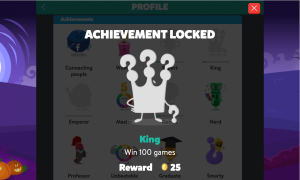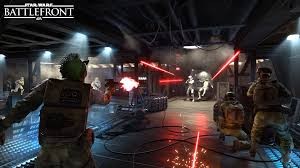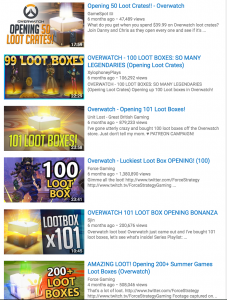How do video games affect how we learn?
Games have a very specific reward process associated with actions taken by users. It is a combination of wanting and liking. Wanting is the motivation and drive to gain something you like, and the liking is related to interest, delight, and fun. These two aspects combine to engage the user.
Games today track billions of data points daily about all of their users. Games track habits: what you spend your time focused on, wether you gain interest in new things easily, how you play (what is your “play-style”). This data is used in the creation of something called the reward schedule. Games create tasks that are neither too hard nor too easy, and they use probability across 100 million users say to decide a rate of reward to time consumed to engage. For instance, box opening sounds like it might be a boring thing to do, but if you open a box and there is a 15-25% chance that there is a pie in the box then it isn’t too hard to gather 10 pies, and if you gain 10 pies then you get a reward.
So back to how do video games affect how we learn, or more specifically how CAN they affect how we learn. Tom Chatfield believes there are 7 video game concepts that are proven to work that we can bring into the real world to improve our learning.
- Experience bars measuring progress
- This allows for a goal to be seen but instead of aiming for the goal you aim for the steps that progress you experience bar to completion
- So with a big essay being your goal, set the milestones at research, writing the first paragraph, writing the second paragraph, writing the into, and writing the conclusion. While that sounds like the process normally taught in schools it still is boring and difficult to measure how far along you are in completing your task. So the research is 10% of the way there, the first, second and third paragraphs of body are 20% each towards your final goal, and the intro and conclusion are those final two 10% steps. All of this breakdown is important because it allows you to know just how much you have completed of the full final quota so that you and your magnificent brain will be engaged in the current section you are on.
- Long-term goals broken into multiple short-term goals
- Trivia crack is a good example of this;



- While winning 500 games sounds like a lot (and it is), winning 25 and then 100 makes that journey a little easier and reminds you of that final achievement and how sweet it will feel when you have won 500 games.
- This can be applied to work in the real life by breaking down a long term goal into smaller segments, and using trivia crack and the experience bar as a tie in you can say whenever you achieve expert you are 5% of the way to completing emperor, and when you complete king you are 20% on the path to completing emperor. Another good example of this is Khan academy and their badges, progress rates, and total completion of subjects.





- The system works in a way that you are presented missions, and from missions you earn badges that increase in magnitude from the meteor level all the way up to the black hole badges. At the meteor level you can complete “Just Getting Started” and “Making Progress” which require you to master 3 and 7 unique skills respectively. At the Moon level you can complete “Productive” and “Hard At Work” which require 15 and 25 unique skills. At the Earth level you can complete “Work Horse” which requires you to master 50 unique skills, and in the Sun level there are achievements for mastering 100, 150, 200, 300, 350, 400 and 500 unique skills. While mastering 500 seems like a lot 3 doesn’t, after three are completed its only 4 more, and after 7 are complete you only need 8 more for 15, then 10 more for 25, then 25 more for 50 and then only 50 more, 50 more, 100 more, 50 more, 50 more, and 100 more until you reach 500. In all those achievements you see an increasing distance between each one but by the time you are at 100 skills mastered 50 more doesn’t seem like all that much, and by the time you’ve mastered 400 and earn the “Newton” achievement another 100 is easy peasy just to get that final “Da Vinci” achievement.
- What all of this achieves (I’m using that work so much, sorry to anyone who is reading this) is turning what seems like monumental tasks that might make you quit at the starting line into easy achievements and by the time you’re almost at the finish line you look back and realize how incredible what you’ve done is. The point of these progression systems and short tasks is to keep you and your magnificent brain engaged until you complete the full task.
- Trivia crack is a good example of this;
- Rewarding Effort
- Again focusing on the previous points, rewarding effort is something that our society has come to ignore. Failure is typically a one and done deal and you have officially thrown away all that time you spent. Video games and organizations like Khan academy turn the journey into something that is rewardable. The task then becomes meaningful even if you fail. Failing isn’t an end anymore, and its not a waste to fail, in fact failing will increase the amount of rewards and “credit” you have in video games until you succeed. Then in a system where failures are rewarded and success is rewarded even more, you create motivation to participate without fear, and without needing to weigh risks and benefits. You are essentially able to “salvage” your efforts and turn everything you do into a worthwhile use of your time. This can open a veritable host of new activities and endeavors you can embark upon that previously you would’ve been too afraid to even try, or think about trying. The point of all this is to keep you and your magnificent brain engaged in the end task.
- Rapid, Frequent, and Clear Feedback
- Consequences and Your Actions. In our day we have a lot of “bad things” happening, like for example, global climate change, pollution, bombings in the middle east, homeless communities growing instead of shrinking, lack of clean energy, and a lack of innovation and improvement in schools and teaching. All of these are incredible and fantastical problems, but it is very hard for people to learn and understand these problems when consequences are so distant in space and time. If you can model these problems for people in a way that they can manipulate the models and receive feedback then they can understand what the problems are, how they are nuanced and potentially how they can be fixed. These models can be made using the previous three learning methods gleamed from the video game medium. Moving away from the models and big issues for a bit: rapid, frequent, and clear feedback is something we see in video games all the freaking time. You don’t pay attention to the side vents in Five Nights at Freddy’s 3 and immediately you get jumped and die. So on your next try you remember and from that first death on you never forget the vents because that moldy Chica scared the crap out of you.

- Or in Battlefront, for those who don’t know battlefront is a star wars game where you are either an imperial trooper, or a rebel soldier. The game takes place in 6v6 up to 20v20 matches in huge maps. In the supremacy game mode (20v20) As a grunt soldier basically your job is to run at an enemy controlled post and try to take it for your team.

- You can die a lot and I mean a LOT in these matches, sometimes within 10 minutes you can die up to 30 times just trying to break past one blockade that the opposing team has set up. After each death a good player is able to recognize why they died and they can try new things to try and break through. With many tasks that require problem solving including boring subjects in math, chemistry, or physics sometimes the best way to learn is to receive rapid feedback as soon as you make a mistake with the hope that you remember and don’t repeat those mistakes. This style of learning can keep you and your magnificent brain engaged in the process of problem solving.
- Consequences and Your Actions. In our day we have a lot of “bad things” happening, like for example, global climate change, pollution, bombings in the middle east, homeless communities growing instead of shrinking, lack of clean energy, and a lack of innovation and improvement in schools and teaching. All of these are incredible and fantastical problems, but it is very hard for people to learn and understand these problems when consequences are so distant in space and time. If you can model these problems for people in a way that they can manipulate the models and receive feedback then they can understand what the problems are, how they are nuanced and potentially how they can be fixed. These models can be made using the previous three learning methods gleamed from the video game medium. Moving away from the models and big issues for a bit: rapid, frequent, and clear feedback is something we see in video games all the freaking time. You don’t pay attention to the side vents in Five Nights at Freddy’s 3 and immediately you get jumped and die. So on your next try you remember and from that first death on you never forget the vents because that moldy Chica scared the crap out of you.
- The Element of Uncertainty
- What is exciting about a reward, is the reward. I know thats basic knowledge, but what I mean is whats REALLY exciting about some rewards in video games in a chance that you can unlock very good rewards. Many games use systems of “loot boxes” or “loot crate” that have a chance of for example giving a common item 60% chance, a rare item 25% chance, a unique item 10% chance, or a legendary item for a whopping 5% chance. Most of these systems can be bought with real world money, good examples of this are League of Legends Hextech chests which cost a pretty penny.

- As you can see youtubers will spend up to $500 buying these Hextech chests because they are searching for a “legendary” unlockable. In this case Hextech Annie is a skin which requires 10 gemstones and to get gemstones you need to unlock Hextech chests. The only problem is these gemstones are so incredibly difficult to get, the youtuber who dropped $500 and goes by the name of Redmercy had a total of 324 chests and only got the 10 gemstones after unlocking 321. Thats nearly a 3% chance to get a gemstone from a box essentially that costs $1.50 USD, and its a virtual box. That video got around 3 million views and 50,000 likes. So Redmercy definitely made his money back, and his video shows that we all love an uncertain chance at a legendary reward. This mostly has to do with the levels of dopamine in our system after we manage to get an amazing reward like that. I can say from personal experience that the feeling is great, I know this because I play a game called Overwatch, in overwatch you gain experience after every match and every time you level up you receive a loot box. These loot boxes contain 4 cosmetic unlockables like “sprays” that you can drop on the map during 6v6 matches, or skins which change how the character you are playing is seen by other players. When these 4 unlockables come out of the box they appear as flipping coins that are thrown up and then land on the ground with a hologram of whatever you received. The spinning coins all emit a colored light based on their grade, Common is gray, Rare is blue, Epic is pink and Legendary is a golden color and their chances are approximately 58.2%, 31.7%, 7.55% and 2.55%. When one of those spinning coins is yellow it really makes your heart flutter because you know you got a good item. This kind of reward is different from a flat reward because of the contrast between legendary and common. Maybe the effort you put into leveling up and unlocking a loot box should really be giving you rare and epic items only, but if you make the lowest possible reward the “common” grade, an item that really isn’t worth your effort appear about 60% of the time, and you make the highest “legendary” grade, something you didn’t really work hard enough for, appear about 3% of the time then the legendary’s contrast against all those commons makes it so much sweeter when you unlock it. Just as with League of Legends, these boxes are also available for purchase at about $40 for 50 boxes, and even though all of these items are only cosmetic and you can unlock them for free, you still see “unboxings” on youtube, even up to 200 loot boxes for about $160.

- All of this is important because you can see that when the rewards are uncertain, they have a high chance of being less interesting and a low chance of being fantastic, our brains are producing dopamine which we then crave and that brings us back to keeping you and your magnificent brain engaged with whatever learning activity we are participating in.
- What is exciting about a reward, is the reward. I know thats basic knowledge, but what I mean is whats REALLY exciting about some rewards in video games in a chance that you can unlock very good rewards. Many games use systems of “loot boxes” or “loot crate” that have a chance of for example giving a common item 60% chance, a rare item 25% chance, a unique item 10% chance, or a legendary item for a whopping 5% chance. Most of these systems can be bought with real world money, good examples of this are League of Legends Hextech chests which cost a pretty penny.
- Enhanced Windows
- Enhanced windows are more focused on the dopamine responses to rewards and how we can manipulate these windows of time to enhance our learning. This is broken down into two parts, with the first being memory and the second being confidence.
- So memory, how exactly do these enhanced windows affect learning you ask confused. Well, during these enhanced windows when the brain is producing dopamine, it is at an elevated state which provokes an emotion that greatly increases engagement.
- So Confidence? (I say unconfidently) Yes Confidence is something all humans gain after being rewarded for completing a task, we begin to get braver and we become more willing to take on more difficulty and more risks. It becomes harder for us to lose our engagement by becoming discouraged.
- Other People!?
- What do popular games and eSports like League of Legends, Overwatch, Dota 2, Smite, Battlefront, Battlefield, Call of Duty, Madden, Fifa, NBA2k, No Man’s Sky (pre-launch), Diablo, World of Warcraft and Penn State Football Games all have in common? They are all gatherings of large people that require collaboration. In the video games a small or large group of players need to collaborate to win a match or achieve an object or complete a large scale raid. Things like guilds, or clubs exist because we as humans enjoy being in groups. We are classified as a gregarious species because we gather in herds, although that sounds funny it is extremely true that we work well in large groups to overcome tasks that would otherwise be impossible for individuals to complete alone. This works on small scales like 40 person guilds in MMO’s, and its true on large scales with the good ol’ U.S. of A during the cold war being an example. Against a large threat or difficult task humans come together to do amazing things, such as sending men to the moon on technology that is basically less sophisticated than a calculator you can purchase for $20 at Walmart.
- An old example of good collaboration in video games comes from Tom Chatfield’s ted talk (linked below scroll to 12:35), he talks about an old video game called Everquest in 1999, in this game there were two boss dragons, and to kill them you had to team up with up to 42 people in what is called a raid (where a large group of people focus on attacking a stronghold or boss). This was a problem because they only dropped about 3 good items even though 42 players were participating. To fix this problem Players came up with a way to motivate each other to participate in these raids multiple times.

- The community created a virtual currency called “Dragon Kill Points”, and every time you queued up for one of these raids you earned some of this virtual currency. The community tracked these points on a website separate from the game (as in not run by the game developers, only the players). After these items dropped the players who participated could then bid for the items they were interested in. So if you save up points from 10 raids then on your 11th raid if you had enough points to outbid others then you could receive the items. These points were non-transferrable and unobtainable using real world currency. This is essentially in Tom’s words a self-enforcing, voluntary currency. So if you wanted the items that were important to you, then you had to work hard for them. This system kept everyone involved, motivated and engaged in participation because of the rewards.
So how do we translate all of this into education? We create a “Grand Continuity” where learning becomes a personal investment for students. We can break large tasks down into many small tasks, and have every task large and small calibrated on an “experience bar” so that students can know easily how much they have completed and just how much is left to reach 100% completion. We can build in good reward systems that give a well deserved reward after completion of a not too difficult and not too easy task. Education will not be method teaching and then release, instead it will be effort centric with consistent attention and feedback during learning. Group learning can become voluntary, self-enforced and participation focused where rewards are given more often to those who participate the most. Video games are an entertainment medium that require individuals participating to learn more about the game in order to play better, win more and receive more rewards. Video games have about 3 decades of constant research and testing, with sample sizes in the tens and hundreds of millions, and all of video games evolution has been with one goal in mind: engage the user and hold that engagement as long as possible to the fullest extent. Engagement is really what we lack in the current education system and some of the more innovative groups like khan academy have realized this and are adapting to create the best learning environment possible.
I have a few final things to say, first is this: not all humans are going to work well together or even work well against each other, there must be some give when groups are needed or there will be large amounts of push back (that would be the wrong kind of collaboration).
The second thing is this: Video games are great ways to model the real world in the virtual one, interacting with and manipulating models increases our understandings of the consequences of actions taken or not taken, thus, I am of the opinion that we need programs (short ones) that have distinct quest lines (many small tasks that lead to completion of a big task) that lead participants through the issues we face and what the consequences will be if we do nothing.
Lastly: I believe the power of data is badly underestimated by most people. All of this talk of rewards and incentives is total hogwash if you do not have data to determine: the correct moments to give rewards, how we should calibrate small tasks to lead to the completion of large tasks, how much effort deserves reward, what elements should be uncertain to motivate action and provoke excitement, and what kind of feedback is necessary to promote engagement. If you have enough data with a large enough sample size to accurately determine all the afore mentioned requirements then engagement is possible in anything if you add: experience bars measuring progress, consistent rewards for effort, elements of uncertainty, short-term goals that build into long-term goals, and rapid, frequent and clear feedback. The key and final ingredient necessary to hold focus is to add incentives and set people up to collaborate and compete with growth and improvement as the goal.
Sources:
https://www.khanacademy.org/
